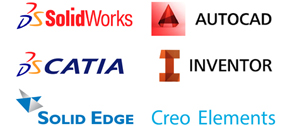Before there was Jony Ive, there was Hartmut Esslinger. The founder of the influential design consultancy Frog started working with Apple in 1982, establishing the design language that drove the look of the company’s hardware for years to come–a shift that reverberated throughout the PC industry. It was Esslinger who first pushed Apple out of a drab beige world toward cleaner, whiter hardware, and his partnership with Steve Jobs in this period helped define Apple’s core values as a user-focused, design-centric company that endure to this day.
Esslinger documents this partnership in his new book Keep it Simple: The Early Design Years of Apple . “It became very clear to me that we were competing for an opportunity to help Steve Jobs create much more than a visual design language,” Esslinger writes (you can read an excerpted chapter here). “Apple needed a cutting-edge system that would enable Steve to translate his vision into marketable products, and Frog was in the process of helping him build it. We were involved in a real revolution – one that would extend well beyond the changes our work would bring to Apple.”
In many ways, the era sowed the seeds for Apple’s resurgence in the last decade and change. The elements of human-centric design, advanced manufacturing and deft supply chain management that were first explored in earnest then are still very much central to the company’s success today. These were the years when Jobs developed his vision for Apple as a company where designers ran the show. Of course, even then, Jobs was looking toward the future, and Esslinger’s work for Apple in the ’80s included not just next-gen personal computers but imaginings of touch-sensitive tablets and even, yes, Apple-made wristwatches.
But at a point where the iPhone has been polished to its logical conclusion and the world eagerly awaits the company’s foray into some new category, Esslinger is more preoccupied with other design terrain. Now an instructor of Industrial Design at the Beijing DeTao Masters Academy in Shanghai, Esslinger says he implores his students to consider their work today in the context of tomorrow. “Today is what’s thought about long ago,” he explained to me over the phone from Shanghai. “Now today we have to we have to project, think, experiment, prototype the future.” Esslinger still remembers a useful model posed to him by one of his instructors during his early days as a design student in Germany. “He said, OK, the future is accelerating. We know that,” Esslinger explains. “But look back 40 to 50 years, and make a model of what happened from then until today. That’s what compresses into the next 10 years. Then you know what to expect.” And what exactly will we see a decade hence? Here are four areas Esslinger thinks are ripe for innovation.
Flexible hardware
While onlookers clamor for new devices–wearables like watches and glasses–Esslinger looks forward to new form factors engendered by flexible components. “Instead of hardbody cases, I think flexible, more organic housings will be possible,” he says. Frog explored the concept for New York Times Magazine in 2004 with the Gelfrog Smart Notebook, a speculative design for a low-cost, education-based notebook with a soft shell, “more like a fabric, more pleasant to use, durable and rugged” than a typical laptop. “It’s like the bottom of a sneaker,” Esslinger explained of the design, “so if you drop it or throw it into a backpack, it will not break.” If that reminds you a bit of OLPC’s most recent tablet, you wouldn’t be wrong.
Since the Gelfrog project in 2004, the possibilities for flexible components have expanded dramatically. Today we see researchers cooking up things like band-aid-like processors and e-ink displays that can be rolled up like newspapers. These days, Esslinger says, nearly everything “can be bent and tweaked.”
More human devices
Another area in which Esslinger sees room for improvement is in the fundamental relationship between users and their devices. “Ease of use alone is pretty dumb after a while,” he says. Instead, Esslinger envisions sophisticated personal assistant-style software that transforms our devices into actual companions, mastering not just our data streams but our personalities, our habits and our temperaments too.
Esslinger explains how, after decades of marriage, it doesn’t take him and his wife more than a glance to establish who’s going to lead the conversation at a party. “A computer would say, ‘Hey husband, listen! Are you being quiet now?’” he says. Esslinger thinks we’ll see a fundamentally more human bond with our electronics going forward, one “based on long term familiarity.” This will mean software that’s smart, but maybe even occasionally entertaining, too. “You don’t want to do the same commands again and again,” he says. Considering how tickled we are when Siri spits out even the most obvious canned joke, he might be right.
Smarter software
“Hardware is very complicated to make and has this huge supply chain behind it. But you can change it. The next product is different,” Esslinger says. “Software on the other hand is like an infinite, living animal you can never kill.” Here Esslinger’s talking about the headaches that come with legacy versions, outdated drivers, issues of compatibility and the lines upon lines of outdated code that gather dust under the hoods of our favorite apps. “All this crap creeps up on you,” Esslinger says. “It slows down the system. It wastes energy and just drags down the information potential.”
Instead, he thinks software products need to borrow from hardware’s philosophy, growing and deploying in lock-step with the devices they run on. “I think there’s a lot to be learned with combining hardware and software–all these elements–in a smarter way. In that I think we still have huge deficiencies,” he says.
3D interfaces
“3D [interfaces] are more natural because we live in a 3D world,” Esslinger says. “All the interfaces today are more like a sheet of paper. That doesn’t give you orientation in the third dimension.” This is one area where we’ve seen rapid advances in recent years, from the affordable Leap Motion 3D controller to Kinect’s fine-grained motion-sensing capabilities. We also see hints of it creeping into operating systems like iOS 7, which tries to add a touch of 3D layering to its fundamentally 2D interface to offer a sense of place and context between apps, system screens and menus.
Of course, the challenge will be figuring out how to create 3D interfaces that actually make sense. After decades, we’ve become accustomed to those paper-like UIs. But one reason we might see progress here is simply that the hardware is finally ready to take us there. “I think the third dimension will be an important opportunity. And the point is, the small computers are powerful enough to handle that,” Esslinger says. “The limiting factor was always computing power. But computing power is incredible today, and it will only increase.”
via apple - Google News http://news.google.com/news/url?sa=t&fd=R&usg=AFQjCNFhJ4HjghkGNRYM2hQqaKDkkWkZvg&url=http://www.wired.com/design/2013/10/4-future-trends-from-the-godfather-of-apple-design/














0 comments:
Post a Comment